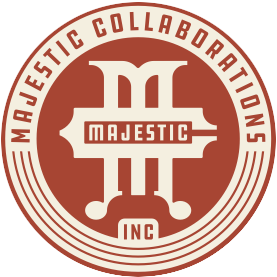OVERVIEW
Leveraging Creative Workforce & Venues as Resilience Hubs
Your existing arts, culture & event (ACE) sectors are a powerful latent force to improve community resilience & preparedness for disruption or disaster.
The Strategies
Strategy #1: Create a dedicated Office of Special Events
Strategy #2: Use festivals as classrooms & training grounds
Strategy #3: Approach public infrastructure redesign as resilience hubs
Strategy #4: Map together, skill together, drill together, respond together
Strategy #5: Train a disruption-ready workforce
Strategy #1: Create a Dedicated Office of Special Events
Establish a city/county-level office to centralize permitting, safety planning, and resilience coordination for all major public events.
Key takeaway: Improves planning consistency and enables cross-training between emergency responders and creative sector workers.
Strategy #2: Use Festivals as Classrooms & Training Grounds
Leverage festivals as real-time, high-engagement training environments where professionals from across sectors can keep skills fresh and practice adaptive decision-making. The recurring nature of festivals offers iterative opportunities to try out and gain familiarity with useful protocols and infrastructure during blue sky days, before putting them to the test in times of disaster.
Key takeaway: Provides hands-on, community-embedded resilience education in environments already rich in collaboration and infrastructure, with a regular cadence.
Strategy #3: Approach Public Infrastructure Redesign as Resilience Hubs
Redesign cultural venues, parks, and gathering places to double as emergency shelters, aid distribution points, or cooling/warming centers.
Key takeaway: Enhances year-round utility and readiness of public spaces for crises.
Strategy #4: Map Together, Skill Together, Drill Together, Respond Together
Conduct cross-sector mapping and training events uniting artists, emergency responders, and government planners to identify community resilience assets.
Key takeaway: Encourages relationship-building, shared protocols, and awareness of mutual capabilities and needs.
Strategy #5: Train a disruption-ready workforce
Offer stackable certifications and skills-based training in emergency response, accessibility, and event safety to workers in the arts, culture, and event (ACE) sectors.
Key takeaway: Builds economic mobility and dual-purpose workforce readiness, mitigating future disaster-related unemployment.
Why arts, culture & event (ACE) sectors?
- ACE workers already steward foundational skills & infrastructure necessary in disaster response & recovery. Whether a festival, a temporary housing center, or a public protest, mass gatherings of all kinds share a number of structural similarities. The same skills required to produce safe, accessible, sustainable live events are transferable to other contexts requiring the development of temporary infrastructure, food, water, sanitation, communications, and the management of large groups of people.
- Our nation’s emergency response agencies have already identified the advantages of a “whole community approach” to preparedness that involves our arts and cultural workers. This reduces bottlenecks in the event of widespread disaster and increases the level of trust, local knowledge, and cross-cultural communications that are included in planning and response.
- The potential impact of redeploying our creative sectors in support of community response and recovery, rather than shuttering their operations in times of emergency, is enormous. In 2019, arts and cultural production accounted for over $804 billion of the U.S. economy, an impact larger than the transportation, tourism, or agriculture sectors. But current practices often position arts and event professionals among the most economically vulnerable to disruption. Cross-training creative sector workers builds flexible, disruption-ready workforces who can pivot to alternative jobs in times of closure or crisis. As it is, the demand for roles in emergency services is projected to exceed average occupational growth through at least 2026.
